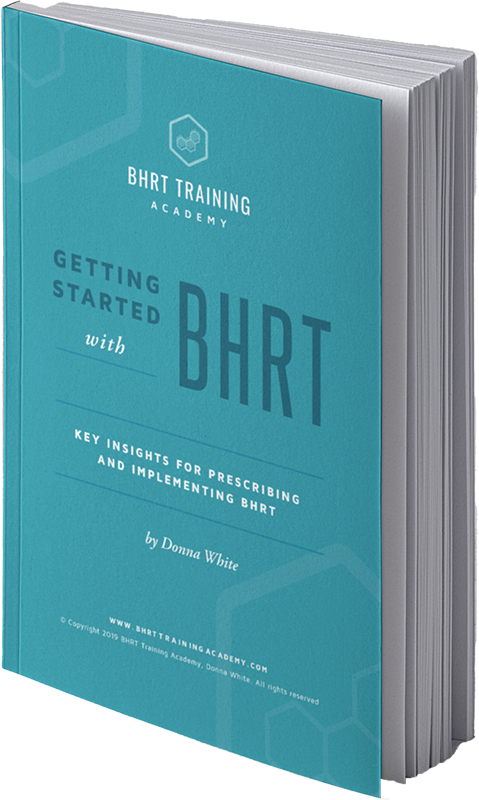Thinking about Starting a BHRT Practice? 7 Things to Consider

With the demand and popularity of BHRT more and more providers are opening up BHRT practices or offering BHRT in their existing practice. There is plenty of opportunity since this is an underserved market. It is a great situation for both providers and the women needing their help.
If all of this interest is nudging you to get into the game, let me be the first to say, “Do it”. Helping patients get their hormones back into balance is one of the most rewarding aspects of practicing medicine. You will not lack for patients nor will you lack from repeated positive feed back from them. BHRT is truly a life changing modality. Helping women get rid of symptoms that greatly impact the quality of their life, their ability to enjoy relationships, and be successful in their career is exactly what you can expect.
Think about it, the fiercest symptoms associated with hormone imbalance are sleep disturbances, fatigue, weight gain, foggy thinking, depression and anxiety, low sex drive and/or painful intercourse, and mild to severe hot flashes. It is really hard to function or be productive with these issues. When you are able to alleviate these and other symptoms you directly impact the physical, emotional and social aspects of your patients’ lives.
If your interest is peaked, you may want to conduct further exploration to see if offering BHRT is a good fit for you. Here is a list of 7 considerations to review.
1. BHRT Training
You will need some training. BHRT really isn’t a one dose fits all treatment. You need to understand each of the hormones and not just estrogen and progesterone. To really help your patients you need to get a good handle on the sex hormones, thyroid hormones, adrenal hormones as well as glucose and insulin. This is because these hormones operate interdependently. You need to learn how to use these with patients along with the supplements, diet and life-style protocols required, hormone testing and lab interpretation. It is a lot but it’s fascinating.
You can do a lot of reading on your own or attend weekend conferences, but a formal training program will serve you better. You can choose from online training programs or on location training ranging from shorter courses to programs that include education on other functional medicine concepts that can take a few years to complete. Pricing can range from $1500 to $25,000+. Though there is not official certification recognized by medical boards, some programs may offer some type of credentialing. Your medical license should allow you to prescribe hormones. It is all about the knowledge you need to learn about BHRT.
Learning won’t stop after initial training. You should regularly attend conferences for updates if your training program doesn’t offer it. Going to these events is always inspiring and encouraging, in spending time with other like-minded BHRT providers.
2. Practice Setting
You will need to decide if you want to offer BHRT in your existing practice, open a new office, join a practice already offering BHRT and other functional medicine treatments, or open a practice within another practice. Let’s look at these in a little more detail.
If you are a primary care or some type of women’s health care provider, it’s understandable why you would want to treat your patients with bioidentical hormones. However, think twice about trying to implement BHRT into your practice if you accept insurance. BHRT consults typically take 30 to 45 minutes, which is more suited for cash-based practices or those offering cash-based services in addition to traditional care.
The same goes for you if you want to branch out on your own and open a new practice. Once you have some training in BHRT you can be a very valuable asset to established practices. More and more practices want to be able to offer BHRT such as integrative medical, aesthetic or plastic surgery, medical weight loss practices and others such as concierge practices. You can even offer a proposal to one of these types of practices to open a practice within their practice. This is a good opportunity for them since it’s another fee for service option for their patients and it brings in new patients to them as well.
3. Legal Issues
You will want to make sure you think about everything from a legal stand point. If you open a practice within a practice you will need a contract with the parties involved. Verbal agreements never work out well for very long. You will also need to have all of the legal requirements on your website such as terms and agreements, privacy policy, and disclaimers. You should have consents for your patients to sign.
Further, be very careful about what your website says. For example, you cannot make claims about BHRT being safer than traditional HRT. If possible, have all of your materials and marketing collateral reviewed by an attorney. Despite the cost, make sure you are legally protected. Speaking of protection, you will also need to review your malpractice insurance and possibly have that updated.
4. Revenue
BHRT is a profitable modality. Revenue comes from office visits, lab testing, and supplement sales. Most patients will need to be seen a bare minimum of 3 times the first year. They need a minimum of 3 hormone tests the first year too. Average charges for office visits vary geographically but typically range from $300 – 450 for initial visits. Follow up visits range from $150 – 200. Profit on testing is a minimum of $100.
Supplements are required for successful outcomes and offering medical grade supplements is the best for you and your patients. The amount spent on supplements per patient can vary widely but a ball park figure is $100 a month with the provider keeping 40-50%. A very general expectation is that each patient should bring $1000 profit per year at a minimum. Many practitioners support their patients even further with nutritional counseling visits or more interim visits to monitor progress which also increases revenue.
5. Fees.
As you decide on your fees you will need to decide if you are going to charge a la carte or design a program and then charge a program fee. I have watched many providers changing to programs over the past few years. Programs tend to help with compliance, provide more service and support to patients as well as bring in more revenue.
6. Marketing
Just like any other business you will need the usual tools including a website and social media sites. You will also want collateral such as brochures, rack cards, and the like. To grow your BHRT practice you should focus on education-based marketing. Many women are confused about hormones and BHRT, so write, speak and post educational content. Always point out symptoms of hormone imbalance and how bioidentical hormones can address them. Women are searching for answers so make sure your marketing provides solutions. Also remember that your materials should not be about you but point out what you can do to help them. Yes, there should be something about your credentials, but marketing should always be about them. Tell how you can help. Patients don’t necessarily care how long you have been in practice or where you went to school. For example, you might say, “I help my patients by spending time listening to them so I can get to the bottom of their hormone problems. Then I can create an effective treatment plan that usually gets them feeling better right away.” Tell how your practice works in terms of benefits to the patients and how it’s different from other practices.
7. Staff and Set Up
Lastly, you will need to decide how much support staff you need. It can be tricky to be a one woman or one man show but it can be done. It can be helpful if some support staff is included if you are in an existing practice. Another thing to think about in regard to staff is that you may want to use a Registered Nurse, health coach or patient educator to do some of the time consuming patient counseling. This can free you up to see more patients.
A newer concept is group coaching visits. This can really maximize time and support patient compliance. As you are planning out your practice you will also need to decide if you want to stock supplements or save cash flow by utilizing services such as FullScript or Wellevate that will ship directly to your patients but still provide you with some of the profit. Many of the top medical grade supplement companies offer that as well however, the previously mentioned companies carry many different product lines that you can choose from for your patient needs.
In regard to record keeping, you can do paper charts if you are not accepting insurance, but I do not recommend it. There are Electronic Medical Record or Electronic Health Record platforms that are reasonably priced, and some are even specifically designed to support functional medicine practices such as Power To Practice. You must get acquainted with the compounding pharmacists in your area. They can provide a wealth of knowledge and you will need to know where to send your patients that need compounded hormones.
I hope these considerations are helpful and not overwhelming. You need to be aware that many have blazed the trail before you and you do not have to figure out all by yourself. Resources are abundantly available, patients are waiting, the work is rewarding. What are you waiting for?

Get the quick read ebook,
Getting Started with BHRT -
Key Insights to Prescribing and Implementing BHRT.
CME's - Earn while you learn.
